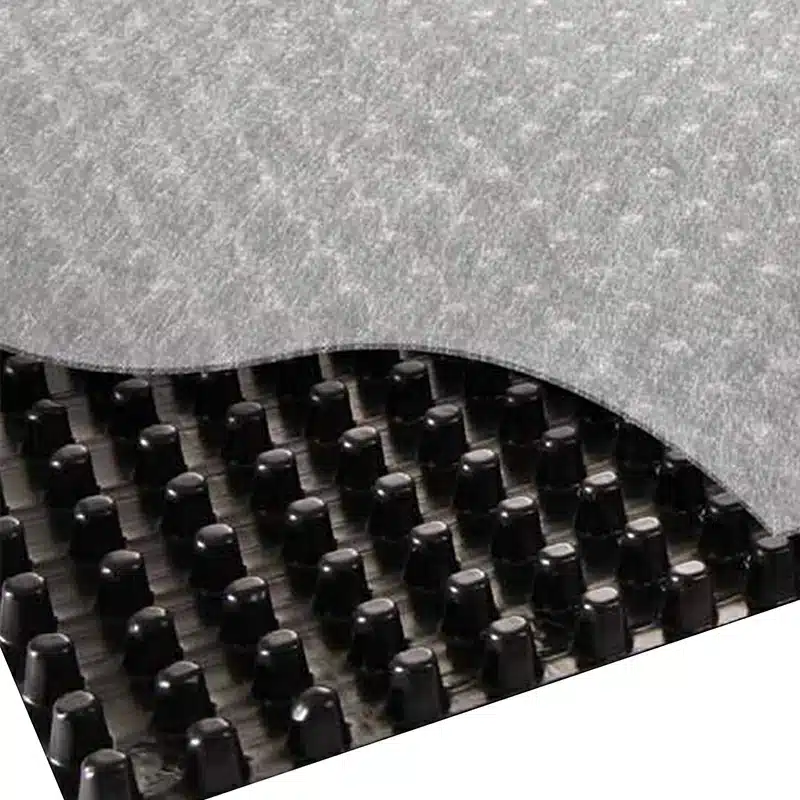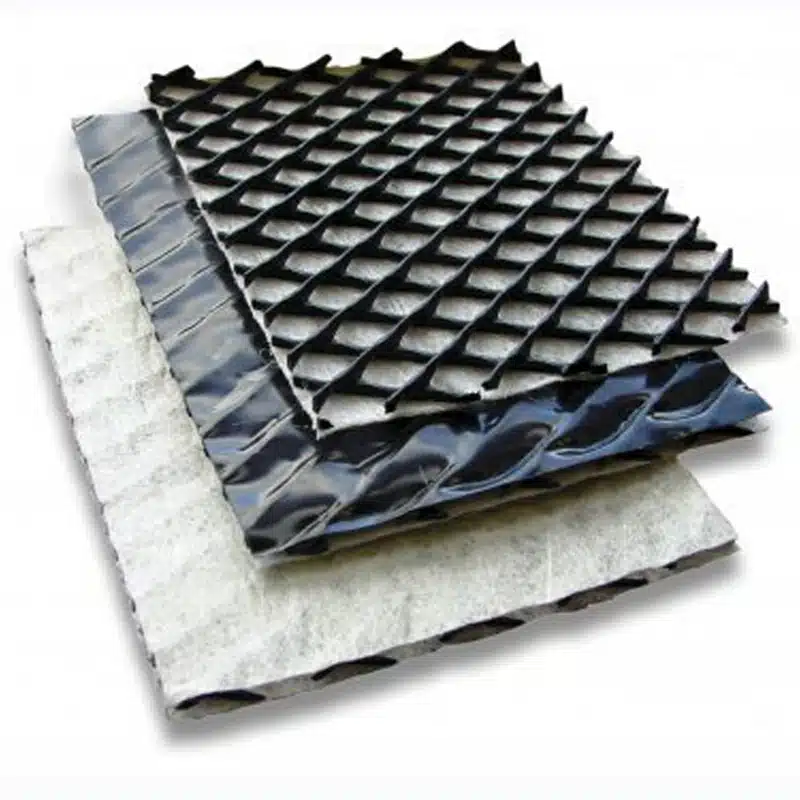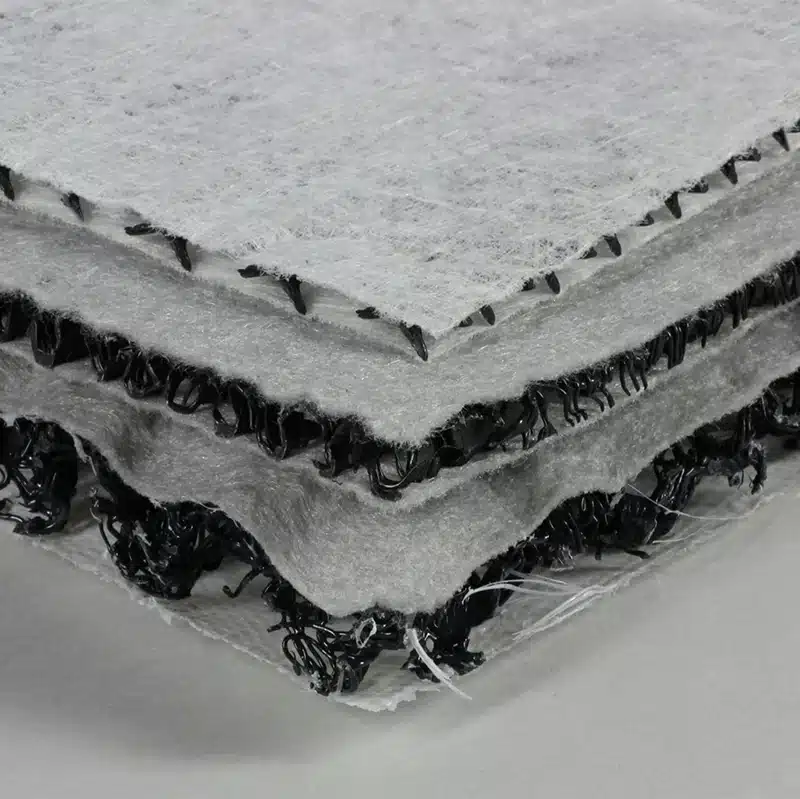+86-159 9860 6917
info@geofantex.com
geofantex@gmail.com
+86-400-8266163-44899
Geocomposite drainage systems have become indispensable in various civil engineering projects, offering efficient solutions for water management and soil stabilization. Among the crucial factors determining their effectiveness is the required gas transmissivity. In this article, we delve into the fundamentals of geocomposite drainage, its applications, types, differences from geotextiles, and the significance of gas transmissivity.
What is drainage geocomposite?
A drainage geocomposite is a type of geosynthetic material designed to provide efficient drainage in various civil engineering and environmental applications. It typically consists of a combination of materials such as geotextiles, geomembranes, and drainage cores (often made of materials like HDPE or PP).
The primary function of a drainage geocomposite is to efficiently collect and transport water or other liquids away from structures or areas where water accumulation could cause problems, such as excessive hydrostatic pressure or soil erosion. They are commonly used in applications such as:
- Landfills: Managing leachate by directing it towards collection points.
- Roads and Railways: Preventing water buildup under pavements to maintain stability.
- Sports Fields: Improving drainage to maintain playability and reduce waterlogging.
- Building Foundations: Protecting against moisture damage by directing groundwater away from structures.
Drainage geocomposites are chosen based on factors like flow capacity, compressive strength, chemical resistance, and durability, making them versatile solutions in various construction and environmental projects.

What are the uses of geocomposites?
Geocomposites find extensive use in various civil engineering applications, including but not limited to:
- Landfills: Geocomposites aid in leachate collection and gas venting systems, crucial for environmental protection and compliance.
- Highway and railway construction: They provide effective drainage beneath road and rail infrastructure, preventing water accumulation and maintaining stability, particularly for drainage from a basal layer in case of embankments and for drainage behind retaining walls and/or bridge abutments.
- Building foundations: Geocomposites are employed to manage groundwater, reducing hydrostatic pressure around structures and preventing moisture-related damage.
- Athletic fields: Synthetic turf drainage systems utilize geocomposites to ensure efficient water removal, maintaining optimal playing conditions.
What are the different types of geocomposites?
Geocomposites are versatile materials, distinguished by their core composition and specific functionalities tailored to various engineering needs:
- Drainage geocomposites: Characterized by cores engineered for efficient liquid drainage, these are vital components in structures like landfills and retaining walls, ensuring proper fluid management and stability.
- Reinforcement geocomposites: Featuring robust cores designed to bolster structural integrity, these are indispensable in reinforcing soil and preventing erosion in critical applications such as embankments and roadways.
- Fluid barrier geocomposites: Engineered with impermeable cores to effectively block fluid transmission, these play a crucial role in containment systems for hazardous substances, offering reliable protection in environments like landfills and industrial sites.
What is the difference between geotextile and geocomposite?
While both geotextiles and geocomposites are essential geosynthetic materials employed in civil engineering, they fulfill different roles:
- Geotextile: Serving as a permeable fabric, geotextiles are designed to filter, separate, reinforce, or protect soil. Typically composed of a single layer, they are primarily utilized for tasks such as filtration and separation.
- Geocomposite: A geocomposite consists of a combination of one or more geosynthetics, specifically a geogrid, a geotextile, a geomembrane, and/or a geonet, with another material. Comprising multiple layers, including a core for drainage or gas transmission, geocomposites offer enhanced functionality compared to geotextiles. Specifically engineered for drainage, reinforcement, or containment applications, they provide a comprehensive solution in a single product.
Understanding the required gas transmissivity of geocomposite drainage is paramount for ensuring the effectiveness of drainage systems in various engineering projects. Geocomposites, with their versatile applications and diverse types, offer efficient solutions for water management, soil stabilization, and environmental protection. By distinguishing geocomposites from geotextiles and comprehending their distinct functionalities, engineers can optimize the selection and design of drainage systems to meet specific project requirements.



Get Free Sample
We’ll respond as soon as possible(within 12 hours)






















